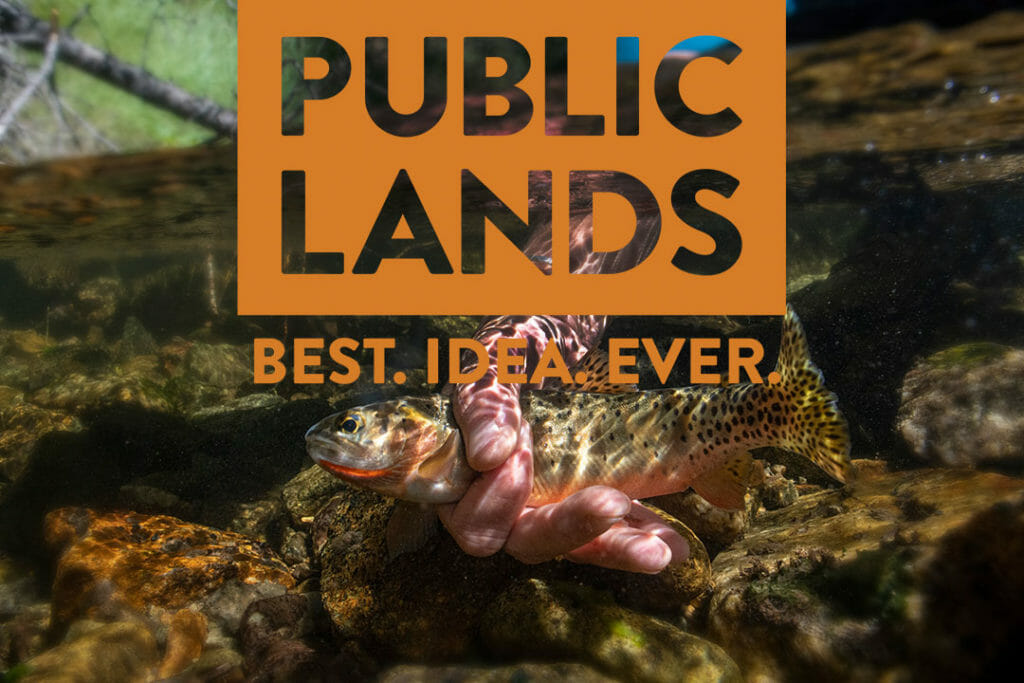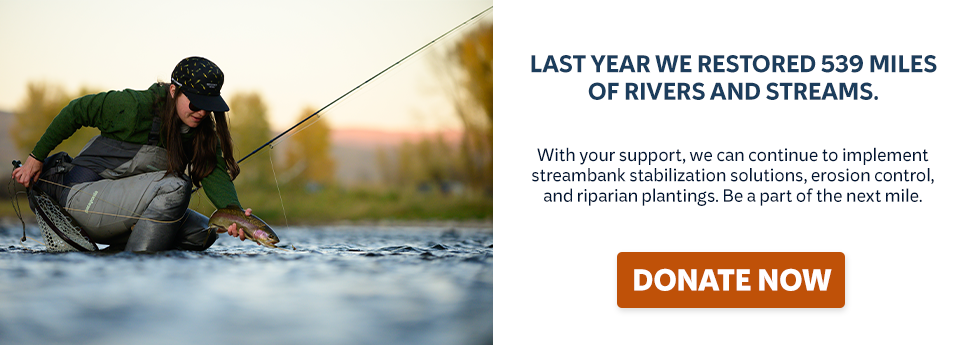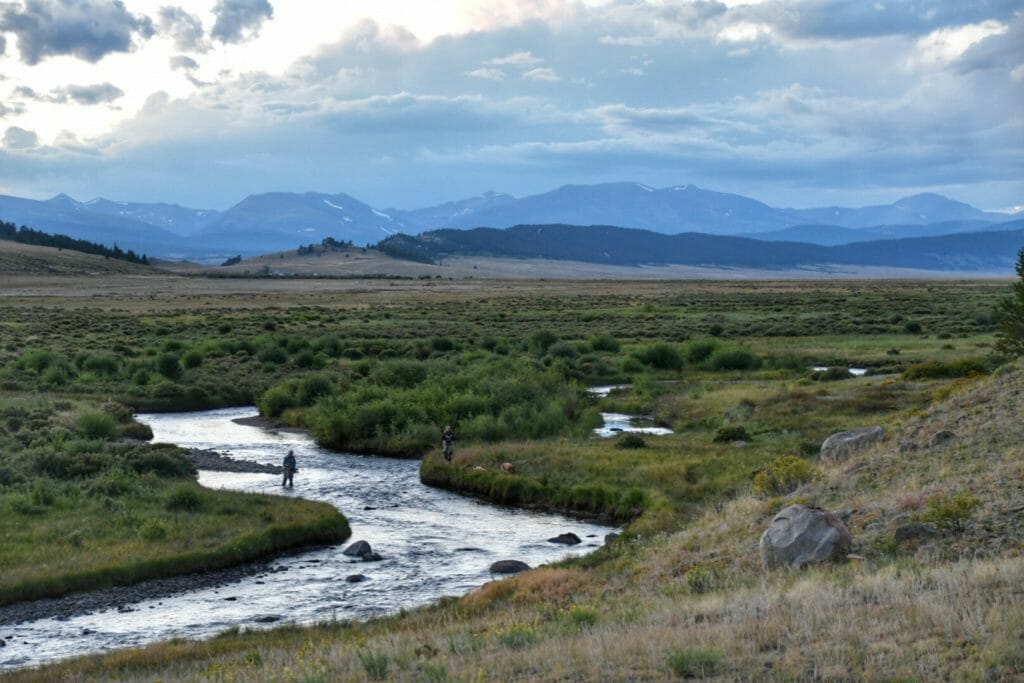

The Bureau of Land Management’s Royal Gorge Field Office covers some 666,000 acres of public lands sloping eastward from the Great Divide, through Colorado’s Front Range and into the rolling grasslands of the High Plains. Tucked into the rugged folds of its western shoulder lies one of the state’s richest landscapes, home to trophy trout, bountiful wildlife and generous natural resources.
The 980-square-mile area known as South Park has long been recognized among sportsmen as a pivotal nexus of water and wildlife. Cradled beneath a rampart of towering peaks and volcanic rock, the seemingly stark expanse serves as something of a natural game preserve, home to rare high-elevation wetlands, agricultural pasture and winter refuges for deer, elk and pronghorn, including no less than seven designated State Wildlife Areas. The South Platte River winds through the heart of the landscape, some 24 miles of it recognized as Gold Medal Trout Waters by Colorado Parks & Wildlife, including the fabled “Dream Stream” flowing out of Spinney Mountain Reservoir, a 2,500-acre pool named one of only three Gold Medal lakes in the state.
More recently though, it’s South Park’s hidden assets that have been attracting the attention of the BLM and others. The Royal Gorge Field Office released a Draft Resource Management Plan for the region earlier this summer, evaluating the risks of drilling for oil and natural gas in South Park along with the remainder of its management area.
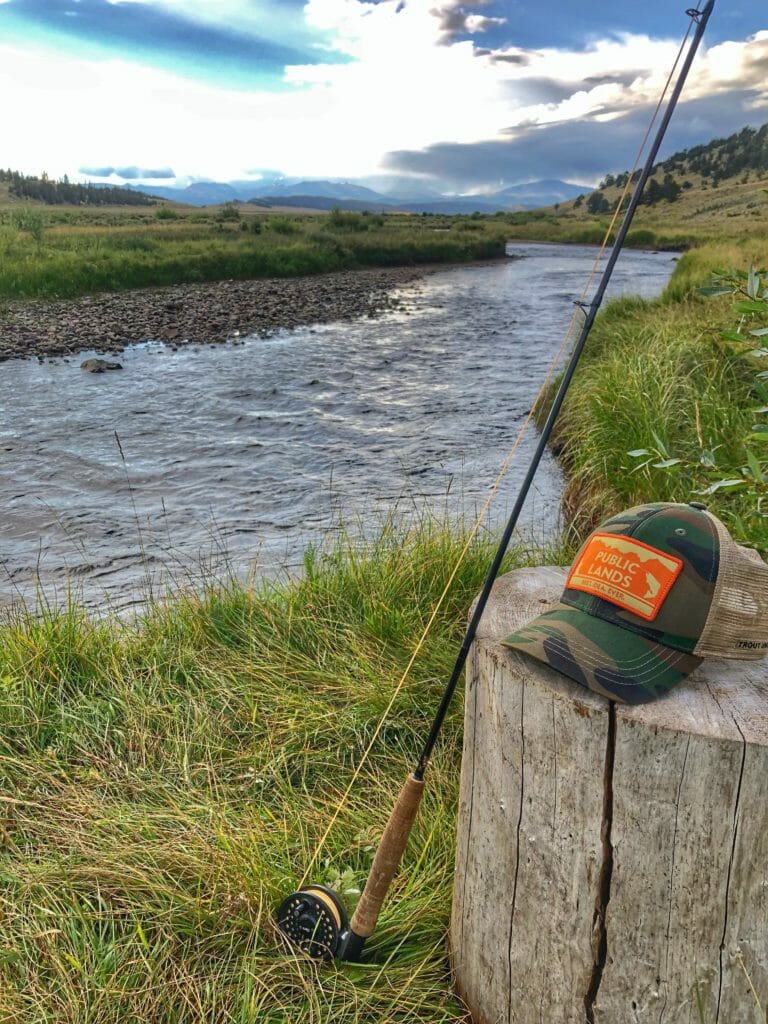
Although its mining legacy dates back to the Gold Rush era of the 1800s, South Park historically has seen minimal drilling, with 28 abandoned wells and no active permits currently in the area. But the potential for future oil and gas development has raised concerns among a host of stakeholders ranging from sportsmen and conservation groups worried about habitat impacts, to Park County locals, who benefit from a robust outdoor tourism economy and get most of their drinking water from aquifers beneath South Park.
Rather than taking a “wait and see” approach to the management plan, however, local stakeholders including Trout Unlimited saw an opportunity to get out ahead of energy development by collaborating with the BLM as the agency began to develop a new land management plan. By creating an upfront plan for leasing and subsequent development, it would create certainty that any future oil and gas drilling would be balanced with sensitive fish and wildlife resources that make South Park such a unique and special landscape.
The jump-start that South Park stakeholders got through a series of public planning meetings in 2014-15 appears to be paying dividends now that the Draft Resource Management Plan has been released for public comments. While several stakeholders have identified areas where the Draft RMP needs to be improved to conserve wildlands and natural resources elsewhere in Eastern Colorado, the majority of the recommendations that stakeholders proposed for South Park are included in the Draft’s preferred alternative.
BLM officials credited that result to the preliminary planning efforts initiated by the local community.
“That allowed the community to make some informed and well thought out and thoroughly discussed recommendations going into the process,” Royal Gorge Field Office Manager Keith Berger said. “By the time the agencies started into our process and the scoping process, folks like TU were way ahead in terms of forming thoughts and ideas and could plug them into the agencies process. A lot of that good thinking stayed in the final draft.”
“It was really gratifying to see that kind of community involvement throughout the process,” Berger added. “When you have that kind of involvement you get plans that stand the test of time.”
The work is far from finished, however, and TU encourages continued public involvement as we further our efforts alongside sportsmen’s conservation groups pushing for inclusion of additional acreage managed as Backcountry Conservation Areas, Areas of Critical Environmental Concern and Lands with Wilderness Characteristics in order to provide necessary safeguards for the habitat most valued by hunters and anglers.
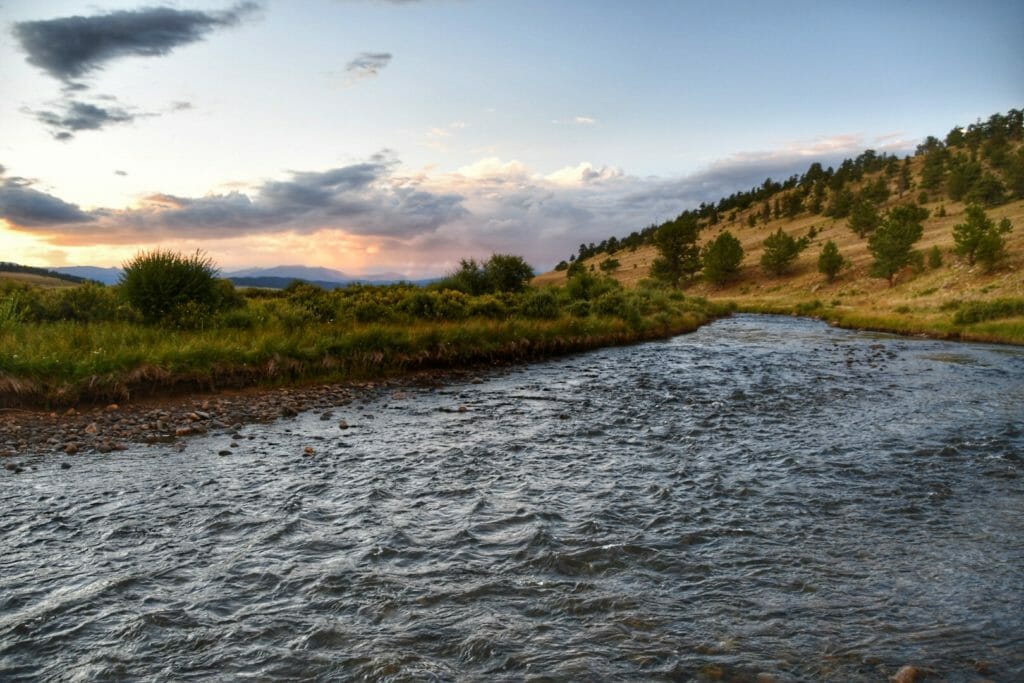
The public comment period for the Draft RMP is currently scheduled to close on Sept. 20, but if the BLM is able to stick to the Guiding Principles it has established “To cultivate community-based conservation, citizen-centered stewardship, and partnership through consultation, cooperation, and communication,” the agency may be able to avoid significant pushback during the 30-day protest period following the release of the proposed final plan expected sometime this winter.
As we know, responsible energy development can coexist with healthy fish and wildlife habitat and quality sporting opportunities, but it requires a commitment to careful planning and collaboration among stakeholders and decision-makers to ensure that public land management agencies like the BLM put appropriate policies into practice. In South Park, the BLM has an opportunity to implement a locally-driven vision for responsible energy development with an emphasis on maintaining the area’s world-class hunting and fishing traditions.
The heavy lifting has already been done. Now it needs to be set in place.
Scott Willoughby is the Colorado Coordinator for TU’s Sportsmen’s Conservation Project. Email him at scott.willoughby@tu.org.
